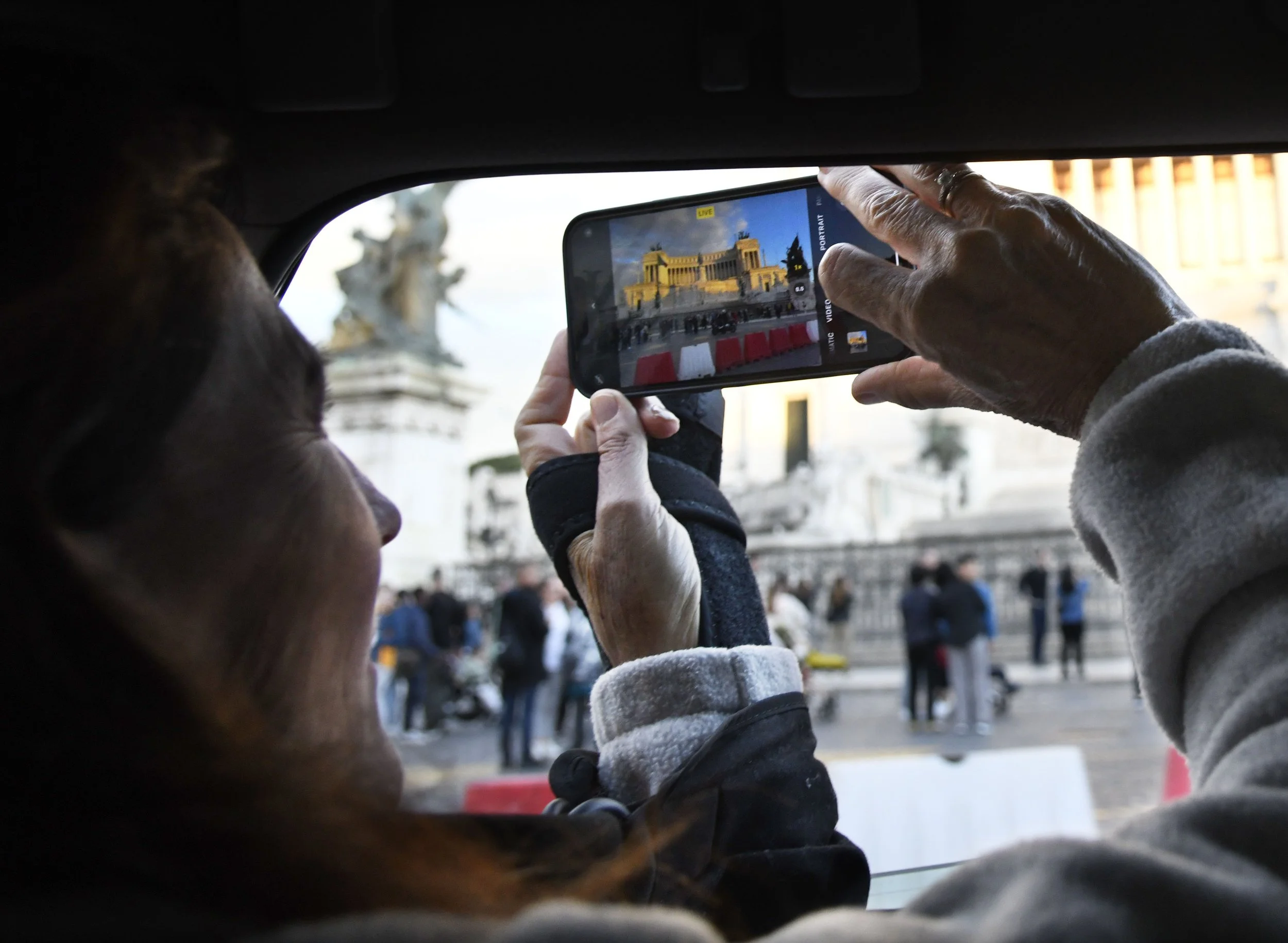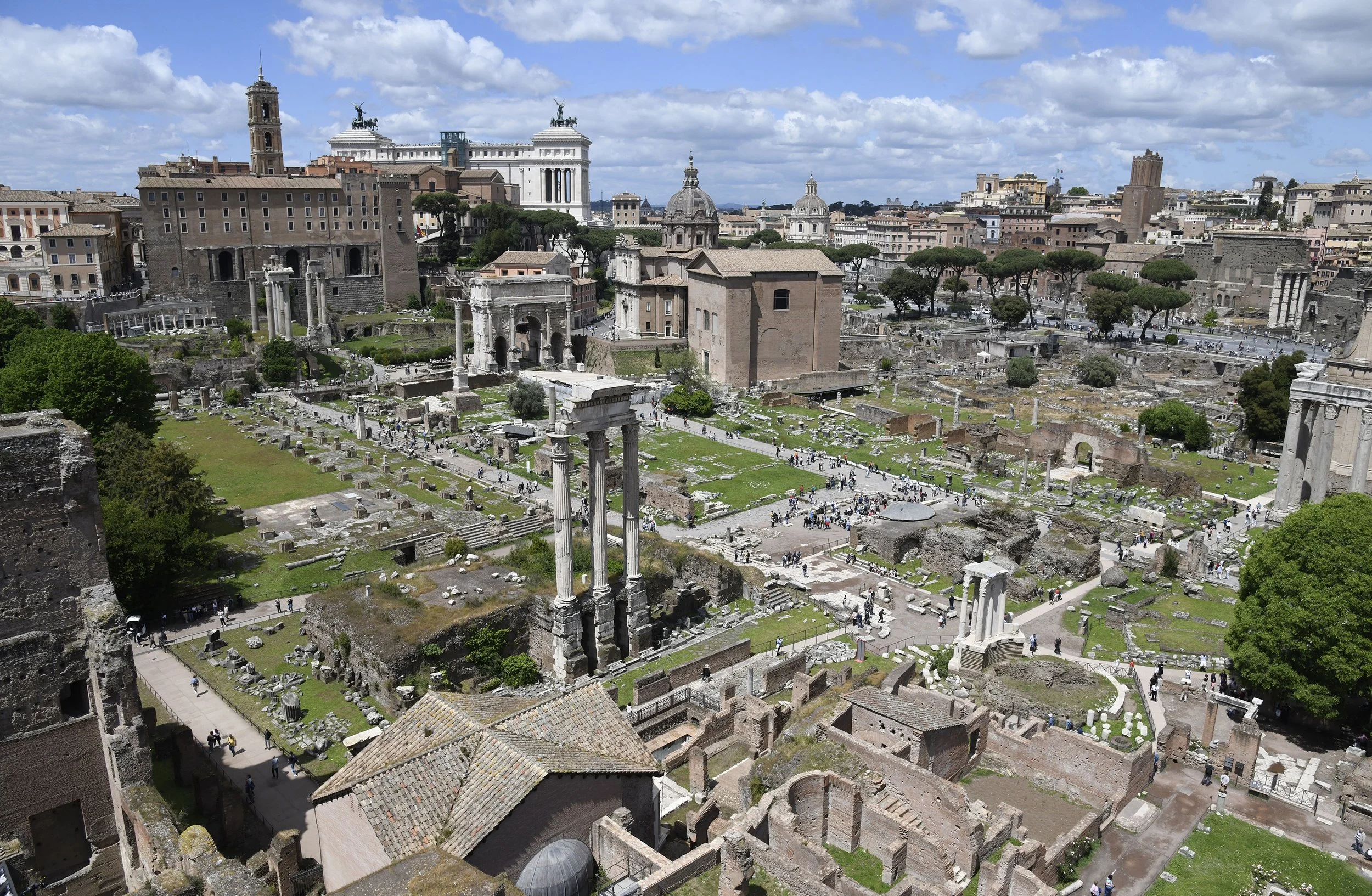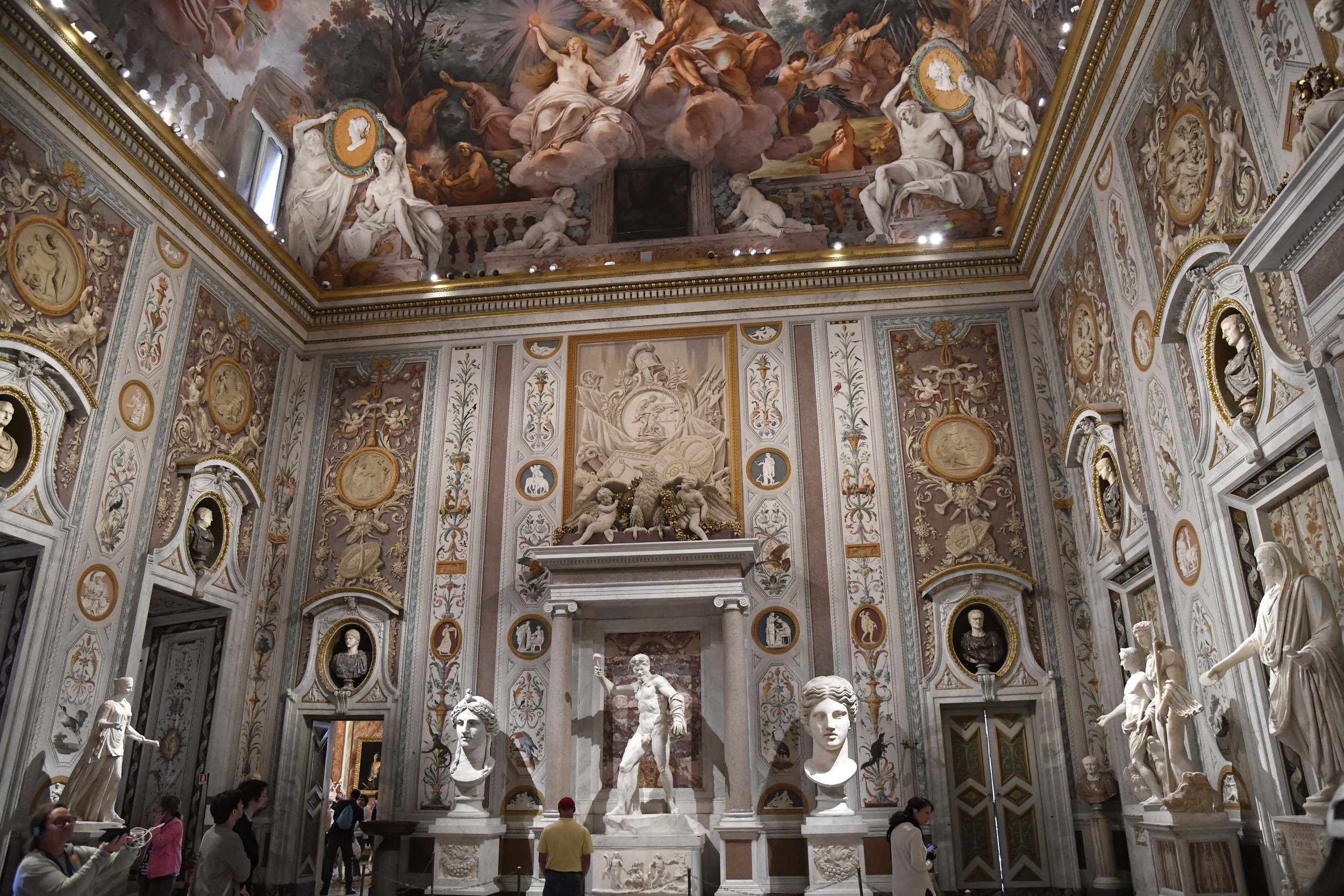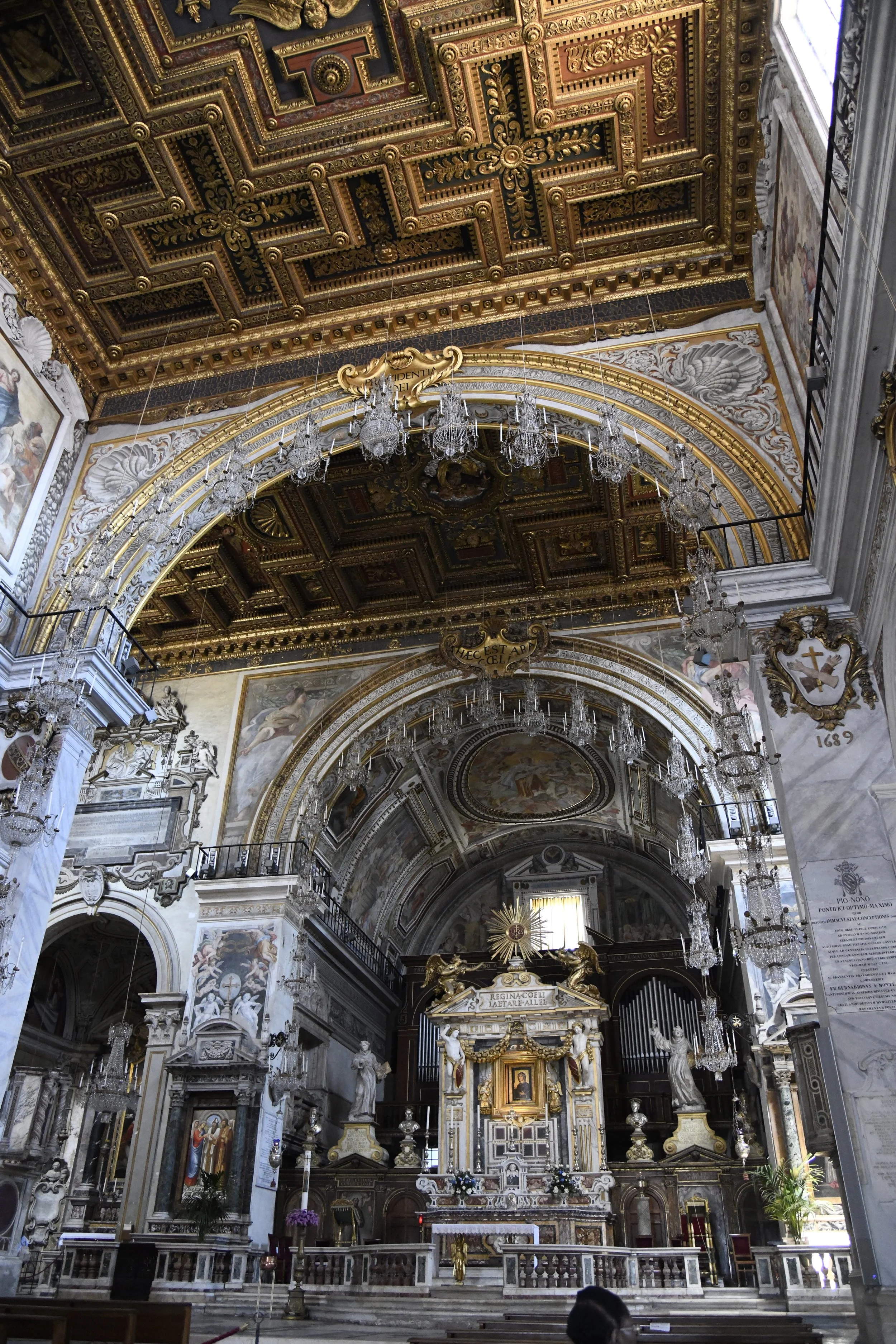Savoring Rome's beautiful chaos
A former Roman temple turned into a Roman Catholic Church, the Pantheon dates back to about 126 AD.
Story and Photos by
By MATTHEW THAYER
Rome is too crowded. It is plagued by labor strikes, pickpockets, and traffic jams. There is trash in the streets.
That reputation steered our Italian vacations north for years. Shunning the Eternal City, we visited Florence, Venice, Cinque Terre, the Dolomites, Siena, San Gimignano, Lucca, Milan and Perugia. Then one Tuscan vacation, we flew in and out of Rome. The city was such an afterthought, we didn't even bother planning our short bookends. We just wandered around gawking and getting lost. Perhaps it was gravity, but every night we ended up at the Pantheon and then Piazza Navona.
Rome piqued our curiosity. We vowed to return with more time and a better itinerary.
This past May, my wife Kelly and I spent six days in Rome as part of a three-week trip that also included stays in Sorrento, Verona and Bolzano, before a brief hop to England. Each locale had its own special charm, but Rome was the highlight. Yes, it was crowded with tourists and we did have to deal with a taxi strike, but the fabled city felt manageable and safe. We found Rome's people friendly and its food inviting and affordable.
A horse carriage driver takes a fare past Rome’s venerable Colosseum.
Of the many different methods of planning a trip, we tend to take a coloring book approach. Arrive with a clear outline, but leave room to fill in between the lines, to be pleasantly surprised and to savor unexpected experiences both big and small. Each of our first three full days featured a tour booked well ahead of time. Day one was the Vatican Museum, day two the Borghese Gallery, and day three the Colosseum and Forum. The remainder of our modest Roman to-do list was crossed off (or not) at our own pace and time.
At the recommendation of Maui sculptor Dale Zarrella, our personal Vatican Museum tour was conducted by its retired head of security, Luciano Gagliano. Every guard knew Luciano, often unclipping red ropes and ushering the two of us around traffic jams of people as he guided us through the sprawling, art-filled museum. Luciano's insights and enthusiasm added an extra dimension to the memorable three-hour visit that included, of course, a long pause to admire Michelangelo's frescoes in the Sistine Chapel.
Tour guide Luciano Gagliano shares his delight in the Vatican Gallery of Maps while conducting a tour of the Vatican Museum in 2024. The gallery commissioned by Pope Gregory XIII in 1580, features 40 topographical maps in the 120-meter-long room. Each frescoed panel covers a region of the Italian peninsula and is rated up to 80 percent accurate. As the former director of security for the Vatican Museum, Gagliano was particularly knowledgeable and helpful.
Luciano stood Kelly in the exact spot where Christopher Columbus delivered his report of the New World to Pope Alexander VI. He said popes generally live in the papal apartments inside the Apostolic Palace, or lay claim to another portion of the Vatican. Not so with the current pope. The unassuming Pope Francis, Luciano said, chooses to live in the Domus Sanctae Marthae, the Vatican's communal guest house for visiting clergy. He said Francis resides in a two-room apartment and enjoys his meals cafeteria-style with whomever happens to be sitting at his table.
The small group tours we took at the Borghese and Colosseum also proved to be interesting and educational. We waited in very few lines. Headphones allowed us to hear our knowledgeable guides no matter how many other groups were beside us craning their necks inside the Colosseum or learning about Bernini's masterpieces at the Borghese. Both places were off-the-hook amazing and deserve to be near the top of any visitor's list.
One of the most iconic architectural views on Earth, Rome's Colosseum is a must-see on any visit to the Eternal City.
One of the Borghese Gallery's outstanding 17th century works of art, Bernini's statue titled "Apollo and Daphne," depicts Daphne's toes taking root and her fingers sprouting leaves as she turns into a laurel tree at Apollo's touch.
The biggest congestion we endured, by far, was at the Trevi Fountain. It began building on the pedestrian street leading to the square. Like salmon in a narrow stream, we were swept along by the current until being deposited in an eddy with thousands of other onlookers and coin throwers. Squished in the press of humanity you gain new understanding of why the legendary fountain is reported to have the most picked pockets in Europe. Thankfully, we were forewarned and had our belongings safely stowed.
On a sun-drenched May afternoon, Rome's Trevi Fountain packs in a crowd.
Built in the 18th century at the intersection of three roads, and the terminus of an aqueduct supplying water to Rome, Trevi Fountain is one of the city’s oldest water resources. About $3,200 worth of coins are tossed into its waters every day. The proceeds are donated to charity.
Emerging from the Trevi, both unscathed and suitably impressed, we set off in search of a taxi home. It had been a long, sunny day of walking and sightseeing and our tired feet were aching. A wrench was quickly thrown into that plan by downed internet service. The taxi drivers were not on strike, as they would be later that week when we needed to make our train to Sorrento, but their meters weren't working. Refused by the first cabbie we approached, the second demanded an exorbitant fare to take us to Trastevere. The third asked for half as much and we hopped in.
A taxi ride back to Trastevere includes a chance photo op of the Vittorio Emanuele II National Monument as it is bathed by a golden sunset. Also known of the "Alter of the Fatherland," the monument built between 1885 and 1935 honors Emmanuel, the first king of a unified Italy. Snapping the photo is Kelly Thayer.
"Quanto costa?" or "how much is it?" are words every traveler in Italy should know–along with other basics like "grazie," "per favore," "prego," "si" and "no." While English is widely spoken, folks appreciate it when you give their language a respectful try. Especially if you are expecting to haggle over the price of an inlaid wooden box in Sorrento or a Roman taxi ride to an old neighborhood beyond the river.
Hotel Santa Maria rests several blocks from the taxi stand and proved a perfect sanctuary for afternoon naps and taking breaks from the hubbub of Trastevere's narrow, cobbled lanes. Its buffet breakfast was a fine way to start the day and its proximity to the piazza fronting the Basilica of Santa Maria meant a nightcap gelato or crepe were just steps away. As for the taxi strike, Hotel Santa Maria's man at the front desk told us not to worry, and after a flurry of calls on his cell phone, he came through with a taxi that delivered us to the train station early.
After a rainy night, the blue skies over Rome are reflected in a Trastevere puddle.
Trastevere is known for its nightlife and restaurants. After two so-so meals at tourist eateries, we stumbled upon Ristorante Carlo Menta, a no-nonsense locals place with the best sautéed frutti di mare we have eaten—clams, mussels and shrimp in a red sauce to die for. Tomatoes were in season and Carlo Menta kickstarted us on a Caprese salad kick that continues to this day.
If we had read its reviews, we probably would have steered clear, but we hadn't and Carlo Menta became our go-to restaurant. What it lacked in ambiance, it made up for in price, quality and steady service.
A horse with a sprite clinging to its mane rears in Piazza Navona's Fontana del Nettuno, or, Founatin of Neptune, in 2024. The fountain built in 1574 had its sculptures added in 1878. The piazza is famous for three fountains, highlighted at its center by the Fontana dei Quattro Fiumi, which was built by the 17th-century master sculptor, Gian Lorenzo Bernini.
Trastevere is located across the Tiber River from most of Rome's popular sights, but that does not mean it is in the hinterlands. We walked to the Colosseum, Borghese Gallery, Pantheon, Piazza Navona and home from the Vatican. One memorable sunset stroll took us to the top of nearby Janiculum Hill where we rubbed elbows with local families and took in sweeping views of the city.
Six days hardly makes one an expert on Rome, but to my mind, the Eternal City is well worth an extended visit. Amid its chaos there is a riot of things to see, do and feel. Wandering the ruins you cannot help imagining what it was like in the heyday of the Roman Empire. The cobbles you walk may well have been trod upon by Julius Caesar, Cleopatra, Audrey Hepburn, Gregory Peck and millions upon millions of others. How could the Romans build on such a colossal scale more than 2,000 years ago? Did the size and scope of the Forum boggle the ancient mind? Or did the jaded locals take it all for granted?
Walking among the ruins of the sprawling grounds of the Roman Forum inspires thoughts of what life for a citizen must have been like when all the buildings were intact and the ancient empire was at the height of its power and glory.
We merely scratched Rome's surface yet left in awe of its history, art and architecture. It seems everywhere you turn there is something to admire. A traveler could spend a month just ducking into its more than 900 churches to study the intricate mosaic floors, stained-glass windows and gold-leaf artistry.
Crowds or no crowds, if you travel smart and have a plan, Rome ranks at or near the top of Europe's must-see cities. Book the highlights and leave some time to get lost and not care. If you're anything like us, you'll stumble upon one amazing sight after another.
Note: Travelers to Rome in 2025 should note that it is a Jubilee Year and plan accordingly. The year-long Catholic event of spiritual renewal, forgiveness and celebration occurs every 25 years. It is expected to increase tourist arrivals and congestion in the city, especially on major holidays like Easter and Christmas.
From its mozaic floors to its frescoed ceilings, the Borghese Gallery is a feast of artwork on a grand scale. So many masterpieces of sculpture and painting are displayed, everywhere a patron looks an amazing work is competing for their attention.
Set to be juiced at a Roman sidewalk fruit stand, a crate of lemons rests on a wall overlooking the Tiber River.
After climbing to the northern summit of Capitoline Hill, the Basilica of Santa Maria d'Aracoeli provides cool sanctuary to sit and take in its marble and gold-leaf splendor. Nearly every block in Rome seems to have a Catholic church, many elaborately decorated. Most are free to enter by respectful guests, apart from when services are being held.
Visiting the popular Vatican Museums is an immersion in art, architecture and history, as well as large crowds of fellow visitors from around the world. An estimated 6.8 million people a year visit the museums. With a reported length of nine miles and 15 billion Euros worth of art, the Vatican Museums is the world's second most visited museum behind the Louvre in Paris.
Raphael's fresco, "School of Athens," in the Raphael Rooms of the Vatican Museum, depicts a debate on the nature of the universe between Plato and Aristotle. Raphael used the faces of many of his contemporaries for the scene, including Leonardo da Vinci, Bramante, and his greatest rival, Michelangelo, who broods in the middle foreground, hand on chin. Raphael himself peeks around a corner at the far right. In the nearby Sistine Chapel, home to Michelangelo's great ceiling frescoes, no photography is allowed.
Rome's Trevi Fountain draws a large crowd.
A Roman taxi driver drives with no hands while telling a story during a ride into Rome.

















